
Deutsch-Chinesische Enzyklopädie, 德汉百科
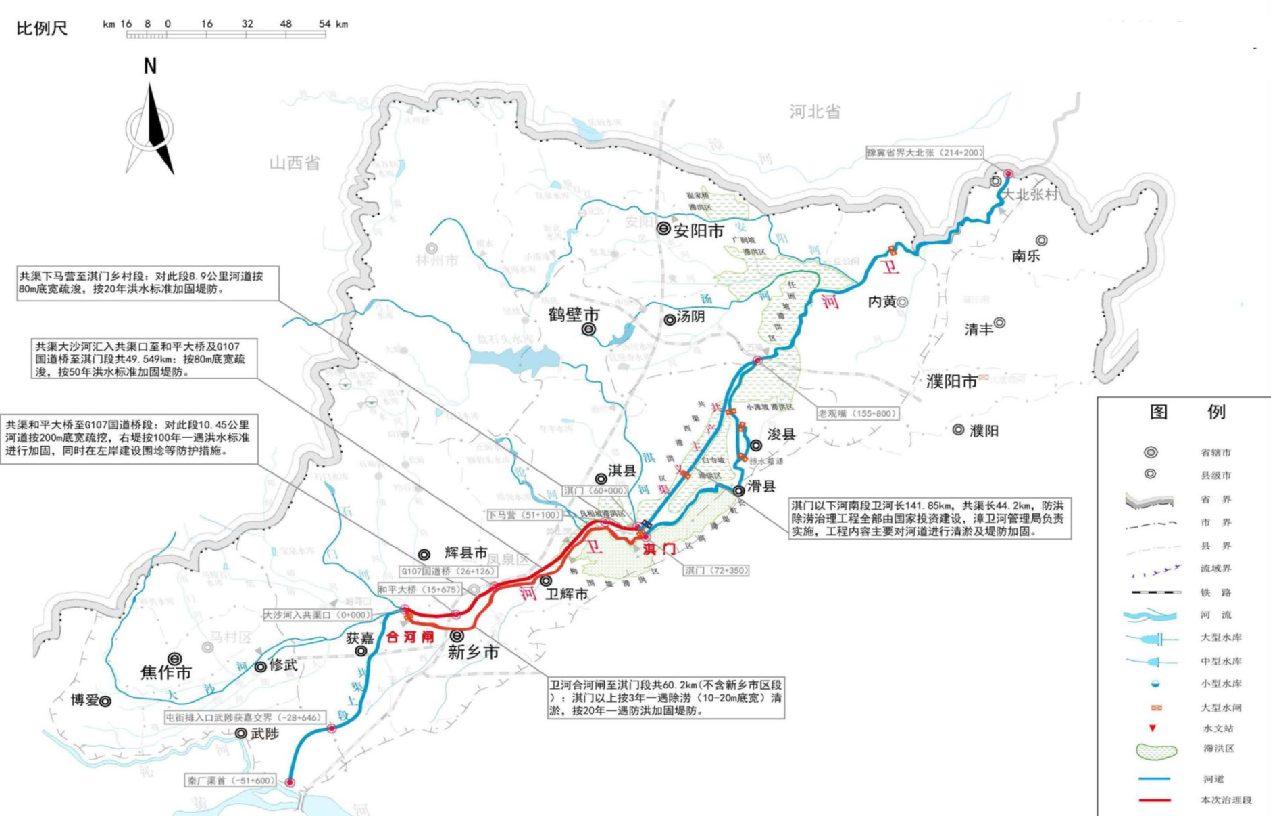
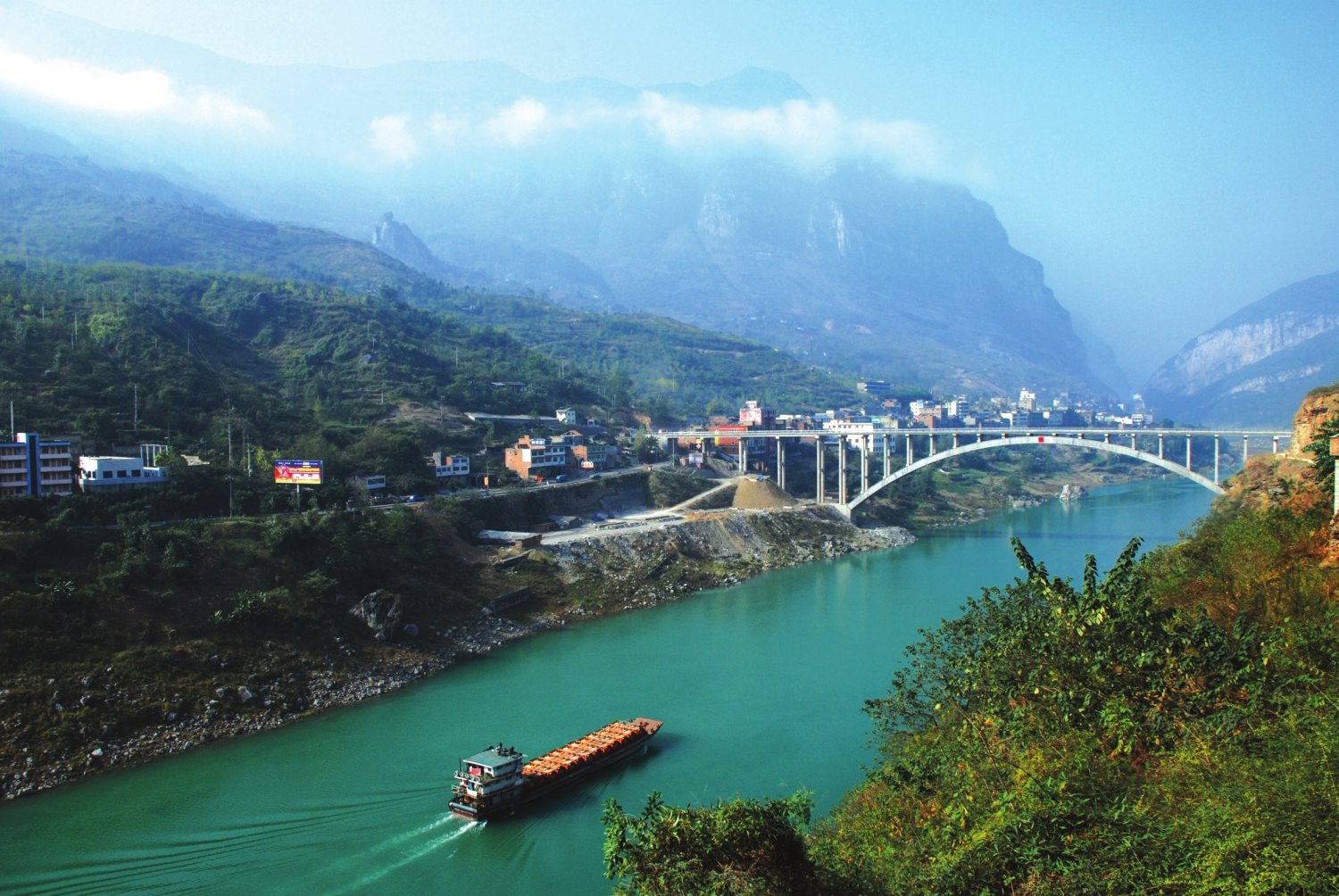
Der Wu Jiang (chinesisch 乌江) ist ein rechter Nebenfluss des Jangtsekiang. Er hat eine südliche und nördliche Quelle, die südliche ist der Sancha He (三岔河), die nördliche der Liuchong He (六冲河).
Nach dem Zusammenfluss heißt der Fluss zunächst Yachi, erst ab Wujiangdu (乌江渡) im Kreis Zunyi trägt er den Namen Wu Jiang. Die Quelle des Sancha He liegt im Westteil der Provinz Guizhou im Kreis Weining (威宁县) am östlichen Fuß des Gebirges Wumeng Shan (乌蒙山). Er fließt durch den Norden Guizhous und den Süden von Chongqing, im Gebiet von Fuling (涪陵区) mündet er in den Jangtsekiang. Der Wu Jiang ist über 1000 km lang. Mittel- und Unterlauf sind schiffbar.
Zu seinen Nebenflüssen zählen Liuchong He (六冲河), Maotiao He (猫跳河), Qingshui Jiang (清水江), Xiang Jiang (湘江), Zhuo He (濯河), Hongdu He (洪渡河), Yu Jiang (郁江) und Furong Jiang (芙蓉江).

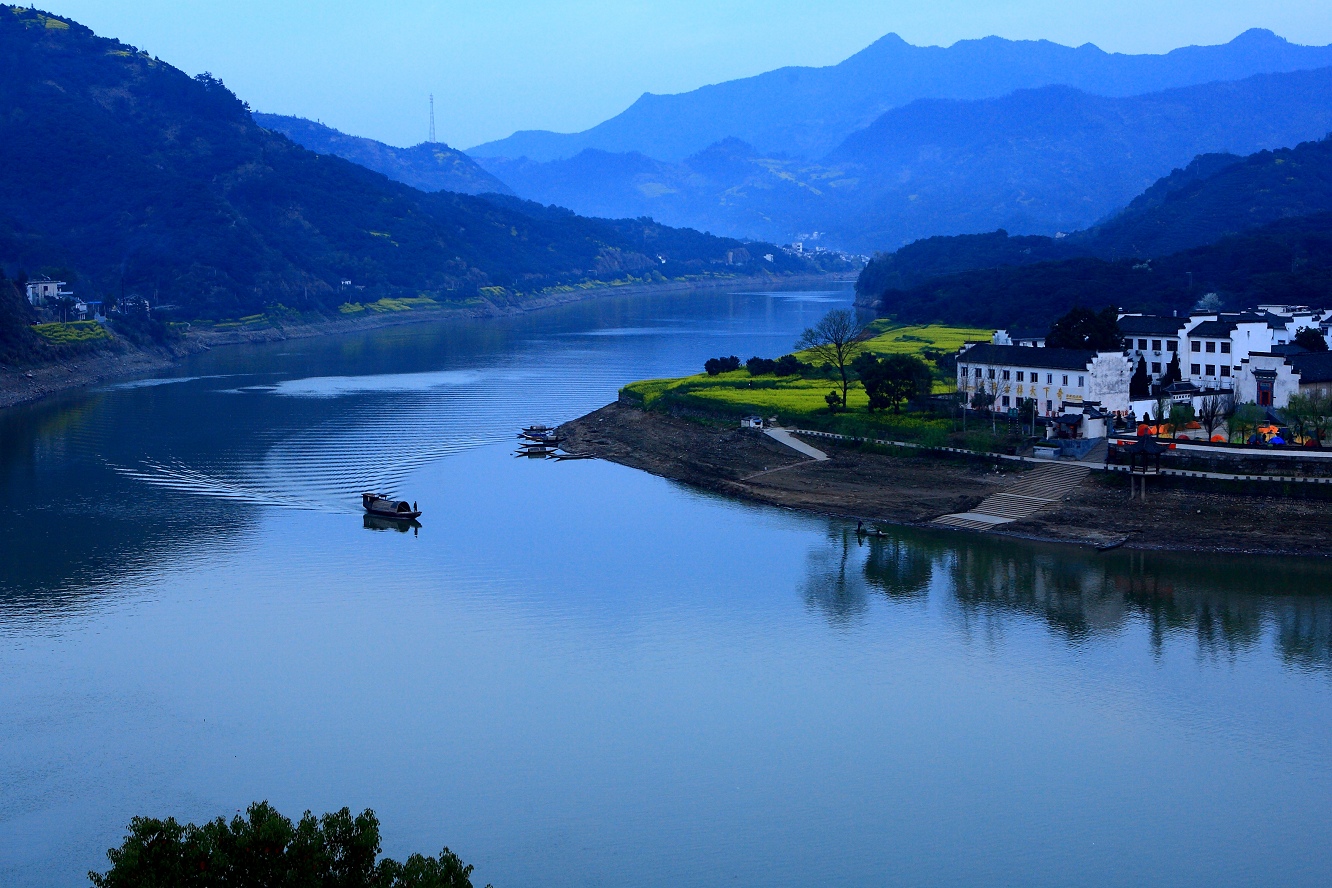
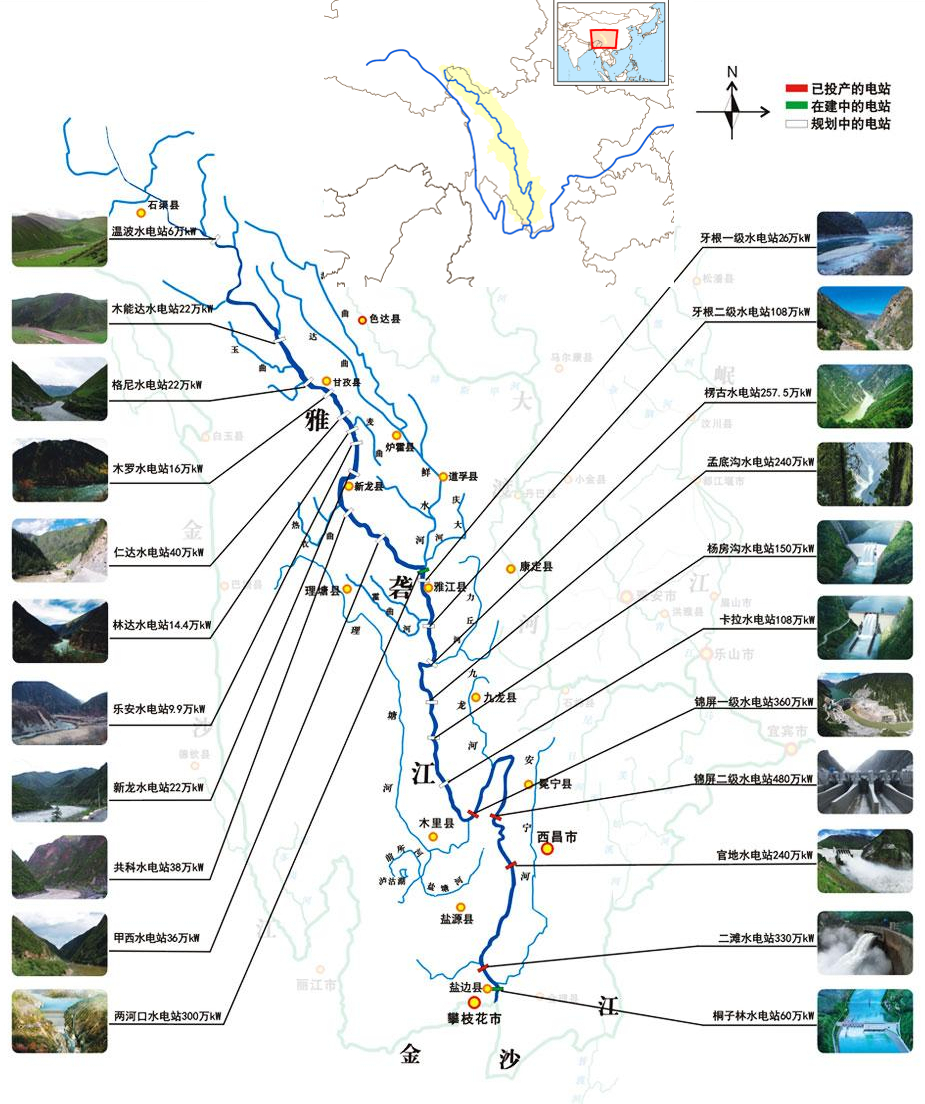
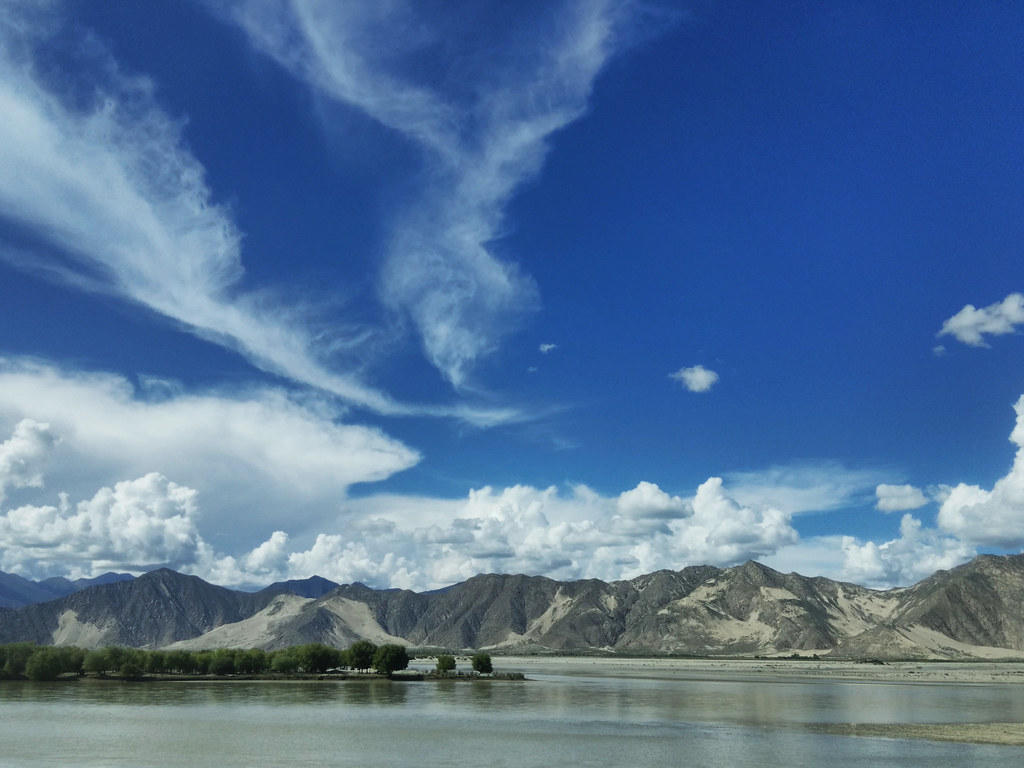
Der Yalu (deutsch auch Jalu, in Nordkorea Amnokkang genannt) ist ein Grenzfluss zwischen der Volksrepublik China und Nordkorea.
Er entspringt auf 2500 m Seehöhe am Paektu-san im Changbai-Gebirge und fließt nach 813 km zwischen den Städten Dandong (China) und Sinŭiju (Nordkorea) in das Gelbe Meer. Die wichtigsten Zuflüsse des Yalu sind der Changjin-gang, der Hŏch’ŏn-gang und der Tongro-gang.
In Sup’ung-Rodongjagu (水豊勞動者區) am Yalu, stromaufwärts von Sinŭiju, wurde die Supung-Talsperre mit einem der größten asiatischen Wasserkraftwerke errichtet. Die Staumauer ist 160 m hoch und über 850 m lang. Da das Kraftwerk in einem Grenzfluss gebaut wurde, wird es von beiden Staaten gemeinsam betrieben. Der Unterlauf des Yalu ist schiffbar. Im Bereich der Mündung des Yalu befinden sich u. a. die Inseln Hwanggŭmp’yŏng und Pidan-sŏm.
鴨緑江(おうりょくこう、おうりょっこう、北京語:Yālù Jiāng、満州語:ᠶᠠᠯᡠ
ᡤᡳᠶᠠᠩ、 転写:yalu giyang[2]、朝鮮語:압록강)は、中華人民共和国(中国)東北部と朝鮮民主主義人民共和国(北朝鮮)との国境となっている川である。白頭山(中国名:長白山)に源を発し黄海に注ぐ。水の色が鴨の頭の色に似ていると言われたことからこの名前がある。
北岸は中国吉林省・遼寧省、南岸は北朝鮮慈江道・両江道・平安北道となっている。川沿いの主な都市としては、中国側に臨江、集安、丹東があり、北朝鮮側に慈城、満浦、楚山、新義州がある。
主な支流は赴戦江、長津江、虚川江で、いずれも北朝鮮側の蓋馬高原から北流して鴨緑江に合流しており、日本統治時代に大型ダムが建設されている。中国側からの支流には愛河などがある。
鴨緑江に架けられている橋の中では、下流の新義州と丹東を結ぶ中朝友誼橋が最もよく知られている。
流域では林業が盛んで、かつては上流部で伐採された木材を筏にして流していた。1930年代後半から1940年代初頭にかけて、日本によって中流域に竣工当時アジア最大級の水豊ダムが建設され、水力発電が行われるようになった。ここで生産される電力は、現在でも北朝鮮の重要なエネルギー源となっている。
The Yalu River, also called by Koreans the Amrok River or Amnok River, is a river on the border between North Korea and China. Together with the Tumen River to its east, and a small portion of Paektu Mountain, the Yalu forms the border between North Korea and China.
Two theories are given regarding the origin of the river's name. One theory is that the name derived from Yalu ula (ᠶᠠᠯᡠ
ᡠᠯᠠ) in the Manchu language. The Manchu word yalu (ᠶᠠᠯᡠ) means "the boundary between two countries". In Mandarin Chinese, yālù phonetically approximates the original Manchu word, but literally means "duck green", which was said to have been once the color of the river. The other theory is that the river was named after the combination of its two upper branches, which were called "鴨" (Yā or Ap) and "綠" (Lù or R(or n)ok)", respectively.
Revised Romanization of Korean spelled it Amnokgang (Korean pronunciation: [amnok.k͈aŋ]; "Amnok River") and Revised Romanization of Hangeul spelled it Aprokgang (Korean pronunciation: [amnok.k͈aŋ]; "Aprok River").
From 2500 m above sea level on Paektu Mountain on the China–North Korea border, the river flows south to Hyesan before sweeping 130 km northwest to Linjiang and then returning to a more southerly route for a further 300 km to empty into the Korea Bay between Dandong (China) and Sinuiju (North Korea). The bordering Chinese provinces are Jilin and Liaoning.
The river is 795 kilometers (494 mi) long and receives water from over 30,000 km² of land. The Yalu's most significant tributaries are the Changjin (장진강; 長津江), the Hochon (허천강; 虛川江), the Togro (독로강; 禿魯江) rivers from Korea and the Ai (or Aihe) (璦河) and the Hun (浑江) from China. The river is not easily navigable for most of its length.[1] Most of the river freezes during winter and can be crossed on foot.[2]
The depth of the Yalu River varies from some of the more shallow parts on the eastern side in Hyesan (1 meter (3 ft 3 in)) to the deeper parts of the river near the Yellow Sea (2.5 meters (8 ft 2 in)).[3] The estuary is the site of the Amrok River estuary Important Bird Area, identified as such by BirdLife International.[4]
About 205 islands are on the Yalu. A 1962 border treaty between North Korea and China split the islands according to which ethnic group was living on each island. North Korea possesses 127 and China 78. Due to the division criteria, some islands such as Hwanggumpyong Island belong to North Korea, but abut the Chinese side of the river.
Le Yalu (chinois simplifié : 鸭绿江 ; chinois traditionnel : 鴨綠江 ; pinyin : ), ou Amnok (en coréen : 압록강), est un fleuve qui marque la frontière entre la Chine et la Corée du Nord.
Il naît sur le Mont Paektu, point culminant de toute la Corée, à 2 500 m d'altitude et se jette dans la mer Jaune, après un parcours de 800 km orienté globalement vers le Sud-Ouest. Son bassin versant a une superficie de 30 000 km2.
Ses principaux affluents sont le Hunjiang (446 km), le Pushi et le Ai He (182 km) côté chinois ainsi que le Changjin, le Hochon et le Tongro côté coréen.
Trois barrages servent à l'approvisionnement en électricité : les barrages de Supung (765 MW), Yunfeng (400 MW) et Taipingwan.
Plusieurs ponts permettent de franchir le fleuve, dont les plus importants sont le Pont cassé du Yalu, détruit par les Américains pendant la Guerre de Corée et le pont de l'amitié sino-coréenne, qui lui est parallèle.
Il fiume Yalu (in cinese: 鴨綠江T, 鸭绿江S, Yālù JiāngP) o, in coreano, fiume Amnok (압록강?, 鴨綠江?, AmnokkangMR) forma parte del confine fra la Cina e la Corea del Nord. I due nomi in cinese e coreano sono le diverse pronunce degli stessi caratteri cinesi rappresentanti la parola Yalu ula in mancese. La sorgente si trova a circa 2500 m sul mare sulla montagna Baitou nei monti Changbai. Dopo circa 800 km il fiume sfocia nella Baia di Corea fra le città di Dandong in Cina e Sinŭiju nella Corea del Nord. Il bacino dello Yalu misura circa 39,800 km²[1].
El río Yalu o Yalú (en chino, 鸭绿江; Amrok-gang en Corea del Norte y Amnok-gang en Corea del Sur,압록강) es un río fronterizo entre China y Corea del Norte. El nombre chino proviene de una palabra manchú que significa «el límite entre dos campos».
Nace a 2500 metros sobre el nivel del mar en Paektu-san en las montañas de Changbai y fluye a lo largo de aproximadamente 800 kilómetros (según las fuentes, entre 813 y 790 km) desembocando entre las ciudades de Dandong (China) y Sinuiju (Corea del Norte), en el mar Amarillo. Los afluentes más importantes del Yalu son los ríos Changjin, Hŏch'ŏn y Tongro.
Ялуцзя́н (кит. 鸭绿江), Амноккан[1] (кор. 압록강?, 鴨綠江?, в старой русской географической литературе Амнокга́нг) — река на востоке Евразии, определяющая юго-западную часть границы между КНР и КНДР — на правом берегу располагается провинции КНР Ляонин и Гирин, на левом — провинции КНДР Пхёнан-Пукто и Чагандо.


布拉馬普特拉河(Deori:Ji Chima或Chima jima,直译:母親河;梵語:ब्रह्मपुत्र,羅馬化:Brahmaputra,直译:梵天之子);《新唐書》 譯迦羅都河,南亚的一条重要国际河流。以水量、长度来说,此河是南亚第一大河。它也是以流量計世界第九大河及以長度計世界第十五大河。
雅鲁藏布江的上游在中国境内,称为雅鲁藏布江,长2057公里;流入印度后称为布拉马普特拉河,长644公里;流入孟加拉国后称贾木纳河,长240公里;在阿里恰与恒河汇流后称帕德玛河,长100公里;在琴德普尔与梅格纳河汇合后仍称梅格纳河长241公里;最后注入孟加拉湾。包括上游雅鲁藏布江在内的全长为2900公里。总流域面积712,035平方公里。流域国有中国、印度、不丹、孟加拉国,四国分别占该河流域面积的51.1%、34%、6.7%、8.2%。
Der Yarlung Tsangpo, auch Yarlung Zangbo (tibetisch: ཡར་ཀླུངས་གཙང་པོ་, Wylie: yar kLungs gTsang po, ZYPY: Yarlung Zangbo) und Yalu Zangbu River (chinesisch: 雅鲁藏布江; pinyin: Yǎlǔzàngbù Jiāng) ist der Oberlauf des Brahmaputra in der Autonomen Region Tibet, China. Er ist der längste Fluss Tibets und der fünftlängste in China. Der obere Abschnitt wird auch Dangque Zangbu genannt, was "Pferdefluss" bedeutet.
Der Brahmaputra (Sanskrit für „Sohn des Brahma“) ist der Hauptstrang des als Meghna in den Indischen Ozean mündenden wasserreichsten Stromes in Asien. Sein in Tibet gelegener Oberlauf Yarlung Tsangpo gilt mit einer mittleren Höhenlage von 4000 Metern als der am höchsten verlaufende Fluss der Welt.[4]
Als einer der längsten Flüsse der Erde fließt er mit einer Länge von rund 3100 Kilometern bis zum Zusammenfluss mit dem Ganges durch das Gebiet der Staaten China, Indien und Bangladesch. Sein Lauf ist teils veränderlich, teils schwer zugänglich und quert mehrere Kulturräume, was zu vielen unterschiedlichen Namen einzelner Teilabschnitte geführt hat.



Der Yongding He (chinesisch 永定河, Pinyin Yǒngdìng Hé, W.-G. Yung-ting Ho) ist der größte Fluss in Peking und der größte Nebenfluss des Hai He in China.
Seine Gesamtlänge beträgt 650 km. Er entspringt im Gebirge Guancen Shan 管涔山 im Kreis Ningwu 宁武县 im Norden der Provinz Shanxi, fließt durch die Innere Mongolei, Hebei sowie die Gebiete der regierungsunmittelbaren Städte Peking und Tianjin.
Zu seinem Flussnetz gehören die Flüsse Sanggan He 桑干河, Yang He 洋河, Qingshui He 清水河 (Zhangjiakou) und Shuiding Xinhe 永定新河.
永定河(满语:ᡝᠨ᠋ᡨᡝ᠋ᡥᡝᠮᡝ
ᡨ᠋ᠣᡴ᠋ᡨ᠋ᠣᡥᠣ
ᠪᡳᡵᠠ,穆麟德转写:Enteheme Toktoho bira),古称㶟水,隋代称桑干河,金代称卢沟,元代称浑河,旧名无定河,海河流域七大水系之一,是河北系的最大河流。流域面积47,016平方千米,其中山区面积45,063平方千米,平原面积1,953平方千米。永定河全长747公里,流经内蒙古、山西、河北三省区、北京、天津两个直辖市、共43个县市。全流域面积4.7万平方公里。
永定河上游的桑干河和洋河两大支流,在河北省怀来县朱官屯汇合,以下的河段称永定河,在延庆区汇入妫水河,经官厅水库流入官厅山峡(官厅水库至三家店区间)。从官厅至朱官屯河长30公里,官厅山峡河长108.7千米,至门头沟三家店流入平原。从三家店以下至天津的入海口,河道全长大约200公里。根据水利系统人们将永定河分为三家店至卢沟桥、卢沟桥至梁各庄、永定河泛区和永定新河四段。
永定河因为经常泛滥更改河道,得名“无定河”。康熙帝改名“永定河”。

 Geography
Geography

 Vacation and Travel
Vacation and Travel
